Trashy Brit horrors
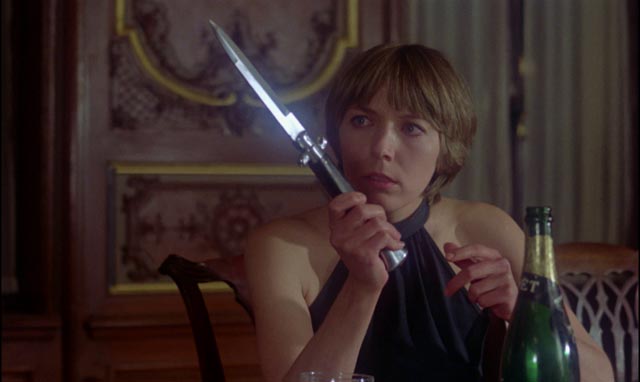
I’ve no doubt said it more than once here, but it bears repeating: context can radically alter one’s opinion about a movie or a filmmaker. That’s why I love box sets; they allow you to see connections which add interest to individual movies which on their own you might not give much thought to.
It’s also no doubt clear that I have a great affection for genre and exploitation movies. My tolerance for creative weaknesses is probably higher when it comes to low-budget exploitation than it is for more serious filmmaking. To some degree I guess that makes me an unserious critic. One week I might be contemplating the richness of genuine cinematic art, but then the next I’ll be making excuses for enjoying trash. If I think about it too much, I start to feel self-conscious and even a bit embarrassed. But at the same time, it wouldn’t be honest to conceal that aspect of my taste.
Bloody Terror: the films of Norman J. Warren
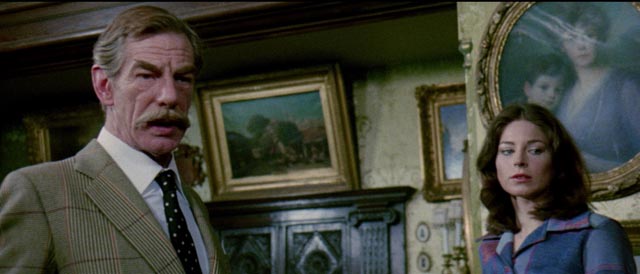
I bring this up now because in the period of less than two weeks, I immersed myself in Criterion’s new Blu-ray set of Abbas Kiarostami’s exquisite Koker Trilogy and Indicator’s Bloody Terror, a new box set of horror movies by English exploitation specialist Norman J. Warren. In purpose and execution, you’d be hard put to find two points farther apart on the cinematic spectrum. In no sense does Warren’s work touch me emotionally, intellectually or aesthetically the way Kiarostami’s does – but nonetheless, I enjoyed watching his five features for all their shortcomings and actually gained an appreciation of his work previously lacking, thanks to the mutual support given to each movie by the proximity of the others, plus the massive quantity of supplementary material provided by Indicator. Kiarostami was an artist of the highest order, but Warren is an engaging hack who turns out to have a great deal of personal charm. He has no pretensions about what he has done in his career, but has simply done his best with what came his way as a commercial journeyman.
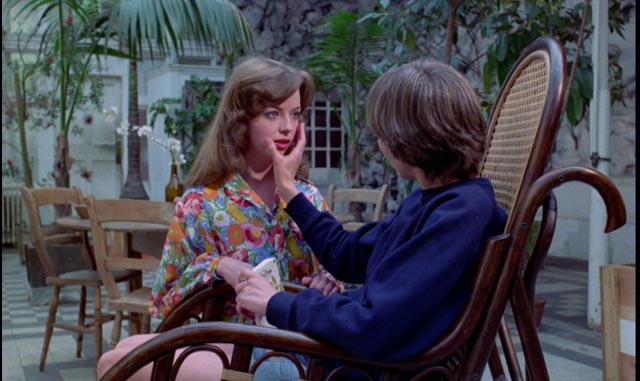
I’d previously seen the set’s first four movies via an Anchor Bay region 2 box set from 2004, but even though there were featurettes and commentaries in that set, I still didn’t think much of the films themselves – they seemed for the most part slow and clunky. Of the four, I’d actually seen one during its theatrical release in 1981; Inseminoid is an Alien imitation on a par with something like Bruce D. Clark’s Galaxy of Terror (also 1981). So what makes my experience of the movies different now? Maybe a bit of mental decline, maybe my susceptibility to the movie equivalent of shiny objects. Indicator has produced an appealing limited edition package (mine is #3391 of 6000), complete with a substantial 120-page book, a double-sided poster (Terror and Inseminoid), five Satan’s Slave lobby cards, and literally hours of new and archival extras – making-of documentaries and interviews, commentaries and deleted scenes, shorts and commercials directed by Warren, plus an alternate cut of Satan’s Slave. It would have been impossible to believe when the movies were first released that decades later they would receive this kind of loving attention … and it’s no doubt still arguable that they don’t deserve it, but there’s no question that the set provides an entertaining, in-depth look at a particular niche of British cinema history, which if it doesn’t convince one that Warren is the equal of Pete Walker at his best, nonetheless shows that he deserves attention.
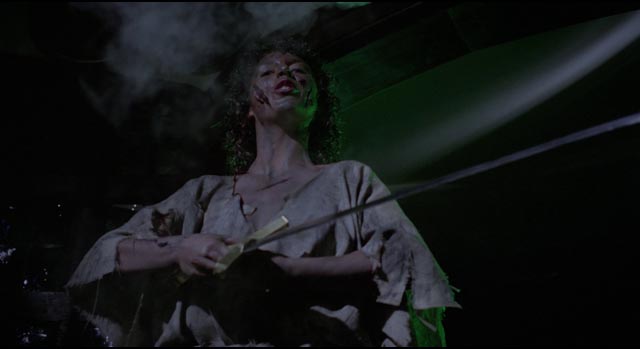
Apart from an expected level of gratuitous nudity and graphic gore, there are two things to note about Warren’s work: a tendency to sluggish pacing which undermines the building and sustaining of suspense and narrative tension, and a real facility with actors which produces some better than expected performances. In Satan’s Slave (1976), his first horror film (after a pair of exploitation features, including Her Private Hell [1967], released on Blu-ray by the BFI in 2012), Warren managed to cast Michael Gough as his suavely solicitous villain and the actor gives a fully committed performance steeped equally in charm and menace. Martin Potter (Encolpio in Fellini Satyricon [1969]) is genuinely creepy as Gough’s tortured son; his fate involves a very convincing, extremely cringey effect. And Candace Glendenning makes an excellent damsel-in-distress.
Satan’s Slave is the best movie in the set. Conceived as a small drama with supernatural overtones, it uses its horror elements to support the story of a young woman dealing with trauma and grief, who doesn’t realize that her solicitous and supportive relatives are actually planning to use her in a sacrificial ritual to resurrect an ancestor executed as a witch hundreds of years earlier. Every helpful gesture is designed to draw her closer to her own destruction. There are various layers of madness, deceit and betrayal, making it the best-scripted movie in the collection.
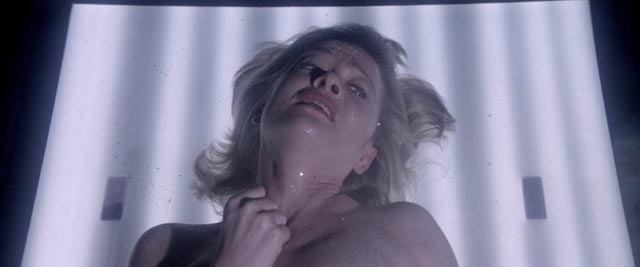
Despite a thinly developed script, Prey (1977) is sustained by the idiosyncratic performances of Sally Faulkner, Glory Annan and Barry Stokes. Terror (1978), on the other hand, has no real standouts in a cast which is nonetheless more than competent, while the cast in Warren’s biggest movie, Inseminoid (1981), don’t have a lot to work with as they run about in a cave complex (an impressive location) being driven mad by an alien power; however, Judy Geeson throws herself totally into the role of a woman carrying monstrous alien babies, torn between vulnerability and murderous fury.
One thing I wouldn’t have guessed without the disk extras is that Terror was inspired by Dario Argento’s Suspiria (1977). When a party trick involving hypnosis causes one of the guests to be possessed by a witch executed hundreds of years earlier, people start dying in gruesome ways. So what’s the connection to Suspiria? Well, there are moments of unnaturally saturated colour, but mostly it’s that Terror was conceived as a string of murder set-pieces held together by a thin and seemingly irrelevant thread … which is kind of like Argento’s masterpiece, but Warren lacks the maestro’s bravura camera style; Terror is fairly entertaining, but despite some effective moments it has none of Suspiria’s operatic grandeur – which is that film’s raison d’etre, as is so clearly highlighted by Luca Guadagnino’s tediously pretentious remake.
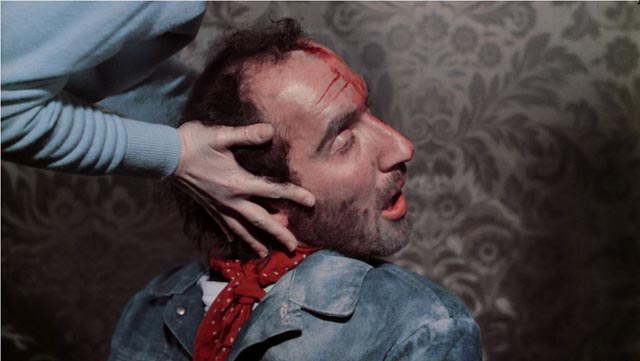
Warren’s final feature, Bloody New Year (1987), suffers from late ’80s slasher syndrome, with a cluster of unfamiliar young actors playing paper-thin characters who exist only to be tormented and killed. That said, I was actually engaged by this film – perhaps because it was previously unknown, but also because it had a more original and interesting concept. A group of friends out for a day at the beach sink their sailboat by what seems to be an uninhabited island. There’s a resort hotel decorated for New Year 1960, and strange, sometimes menacing figures appear and disappear as the friends try to find a way to get back to the mainland.
These ghostly figures become increasingly threatening and the friends gradually figure out that they’re caught in a space-time warp caused by a military experiment gone wrong almost thirty years before. Like the island’s inhabitants, they’re apparently condemned to an eternity of going in circles, dying and returning to die again. Despite the irritating characters, Warren does a good job of revealing this situation, with some effective jump scares along the way. (The best part of the movie is the prologue, which ends with something completely unexpected.)
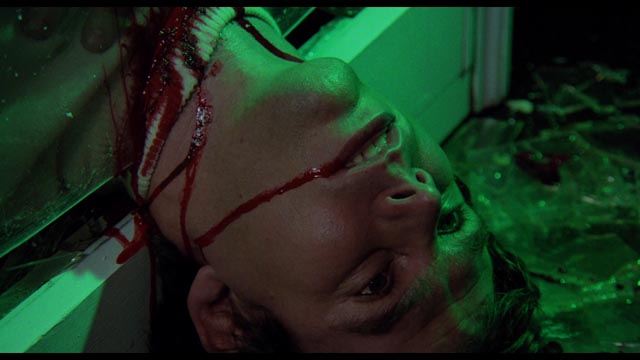
Two of the movies hinge on witchcraft and family curses going back centuries (Satan’s Slave and Terror), while the other three, despite some Gothic trappings, all have sci-fi premises. To some degree, Prey is the most disappointing movie in the set because it falls far short of its potential. A three-character piece, it has an alien in human disguise intrude on the isolated lives of a pair of lesbians hidden away in a big country house. The two women have a relationship fraught with tensions stemming from some unrevealed secret. Josephine (Sally Faulkner) is very controlling, seeming to keep Jessica (Glory Annan) a virtual prisoner. There are hints of past trauma, dark family secrets. The tension between them is brought to the surface with the arrival of Anders (Barry Stokes), a stranger who seems virtually autistic, certainly socially inept.
Jessica invites him to stay against Josephine’s wishes, apparently seeing him as a way out of their claustrophobic relationship. Anders’ obliviousness enables them to play with him in potentially humiliating ways (they dress him in women’s clothes and makeup for an impromptu party), but he doesn’t know enough about human behaviour to understand what they’re doing because he’s an alien newly arrived on Earth to scout the planet for a food source. The horror potential of this is repeatedly undermined by the ludicrous makeup inflicted on Stokes whenever he reverts to his true form – dark contact lenses, plastic fangs and a plastic pig-like nose.
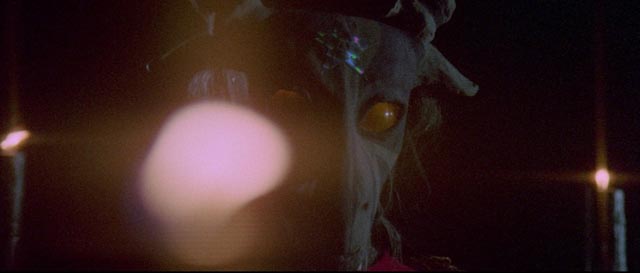
It’s frustrating that the script never actually fills in the women’s past history, but the biggest disappointment is the resolution. It would have been nice to see the alien defeated by the two women using him as a pawn in their own psychodrama, perhaps without them even realizing that they’d saved the planet. But instead the male intruder triumphs, paving the way for an invasion.
This ending points to one final defining characteristic of Warren’s movies: the downer ending so popular in the 1970s and ’80s. These are all stories in which evil wins, which in itself is not necessarily bad narratively speaking, but sometimes it would be more satisfying if characters managed to find a way out of a dire situation – if the lesbian couple had managed to outwit the predatory male intruder, or at least one or two of the friends in Bloody New Year had been able to reason their way out of the space-time trap on the island.
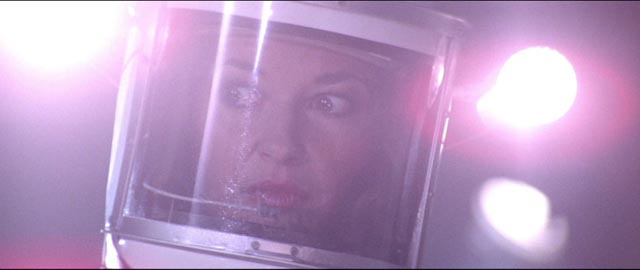
The first four films look pretty good on Blu-ray considering their age and budgetary limitations, but the original negative of Bloody New Year was apparently destroyed and the transfer was sourced from a print which shows quite a bit of damage, with faded colours and frequently poor contrast. I haven’t watched all the plentiful extras, but really enjoyed a couple of the recent interviews with Warren.
*
The Legacy (Richard Marquand, 1978)
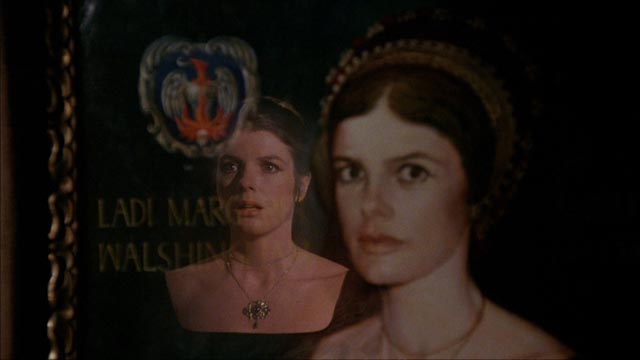
Would Richard Marquand’s first feature The Legacy (1978) have benefited by some additional context? I’m not sure what that might have been, but as a stand-alone disk, it’s as underwhelming as when I first saw it in a theatre on its original release. A creaky old-dark-house horror, it was based on a script by Jimmy Sangster which was heavily rewritten by Paul Wheeler and Patrick Tilley – to such a degree that Sangster all but disowned it as an undesirable throwback to the kind of horrors he had churned out for Hammer in the mid-’60s.
I was a bit surprised to learn from several of the disk extras that it was considered by those who made it (including producer David Foster, director Marquand and editor Anne V. Coates) to be in the same category as Richard Donner’s The Omen (1976); it seems more akin to something by William Castle from a couple of decades earlier. Essentially a supernatural slasher movie, it gathers a fairly random collection of characters in an English country house, where they die one by one in different gruesome ways (which we eventually learn are related to events in their personal histories) as the dying host chooses the one who will inherit his wealth and black magic powers.
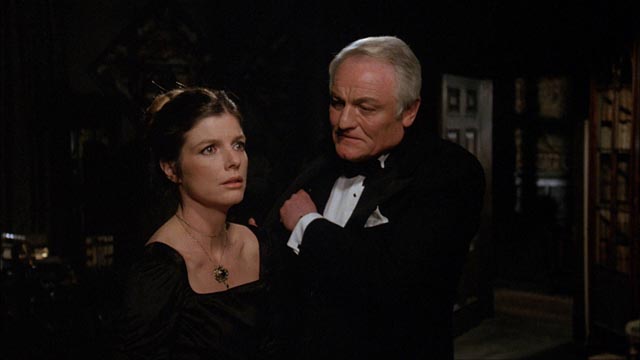
The protagonists are an American couple played by Katherine Ross and Sam Elliott, who are respectively troubled and bemused by the strange ways of their foreign housemates. Any movie which also features Charles Gray and Roger Daltrey automatically slides down the slope into camp, further undercutting any genuine sense of horror – Daltrey’s protracted death choking on a chicken bone is something to see. Despite some decent production values and a good cast, The Legacy feels like a television movie-of-the-week, recycling already tired elements for no particular reason. Just three years later, Marquand directed the excellent World War Two thriller Eye of the Needle (1981), so he must have learned something from his experience on this un-scary horror.
And yet Indicator has lavished its usual attention on the movie, including both the U.S. theatrical version and the original longer British cut (the latter unfortunately in open-matte standard def). The U.S. cut receives an excellent hi-def transfer; there’s a commentary, three interview featurettes (two originally from Shout! Factory’s Blu-ray), plus a comparison between the two versions. There’s also an early documentary by Marquand, Between the Hammer and the Anvil (27:06, 1973), about the Liverpool police.
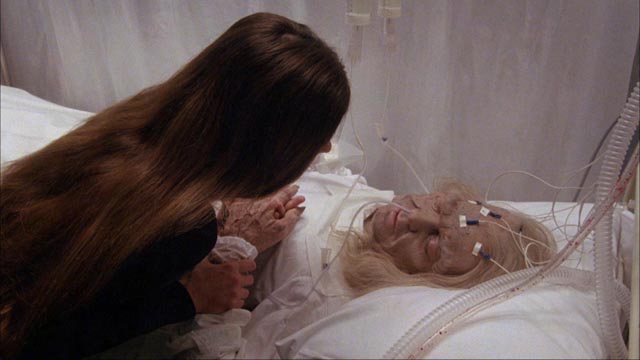
Given my memory of seeing the movie in 1978, I wouldn’t have made any effort to watch it again … but I added it to my order for the Warren box set purely because of all the extras offered by Indicator. That annoying attraction to shiny objects keeps overruling my better judgment.
Comments